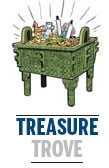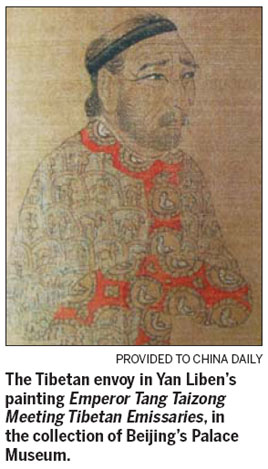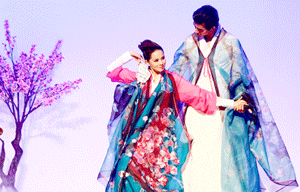A painting that marries imperial figures
Updated: 2011-11-10 07:58
By Cheng Anqi (China Daily)
|
|||||||||
Editor's Note: Every week we look at a work of art or a cultural relic that puts the spotlight on China's heritage.
 |
Yan Liben is celebrated as ranking among the best Chinese figure painters and was arguably the genre's leader during the Tang Dynasty (AD 618907) - for good reason, as can be seen in his surviving works.
While he was the personal portraitist of Emperor Taizhong (AD 599-649), he portrayed many members of the court during his career.
While most of his works haven't survived the ravages of history, his style can still be seen in Emperor Tang Taizong Meeting Tibetan Emissaries.
The hand scroll depicts the meeting between the emperor and the Tibetan envoy sent by Tibet's King Songzain Gambo (AD 617-650) to escort Princess Wen Cheng west to become the Gambo's bride.
The marriage recorded on this 129.6-cm-long, 38.5-cm-wide work is a historical milestone. The princess took with her many craftsmen and ancient books and records that influenced Tibetan culture.
The painting shows the emperor sitting in his sedan chair carried by six maids, while three others hold an umbrella and two fans for him.
On the other side stands the master of ceremonies, a man with a curly beard clad in a scholar's robe, while the other figure, a younger man wearing white, appears to be an interpreter. The Tibetan envoy stands between the two.
|
 |
The different poses assumed by every figure indicate that individual's precise social status.
The seasoned master wears a serious expression, while the interpreter appears attentive yet uneasy about his inferior position.
The emperor and Tibetan envoy are the most gloriously depicted.
Taizhong's form and features were first meticulously outlined in ink and then washed in with color. His clothing is rendered using only a few brushstrokes with little hue.
His steadfast gaze depicts his grave demeanor.
Yan was intimately familiar with the emperor and his personality.
The envoy appears in Tibetan attire and stands with his hands respectfully folded.
His conspicuously Tibetan features are furrowed from his long journey to Xi'an. The envoy's serious posture displays respect for the emperor and an awareness of his mission's importance.
The bold colors and intricate brushstrokes create a sense of solemnity. Fluid strokes create modulated lines that bring out the silk clothes' texture. The faithful depiction of the dazzling patterns that adorn the envoy's clothing also indicate his importance.











